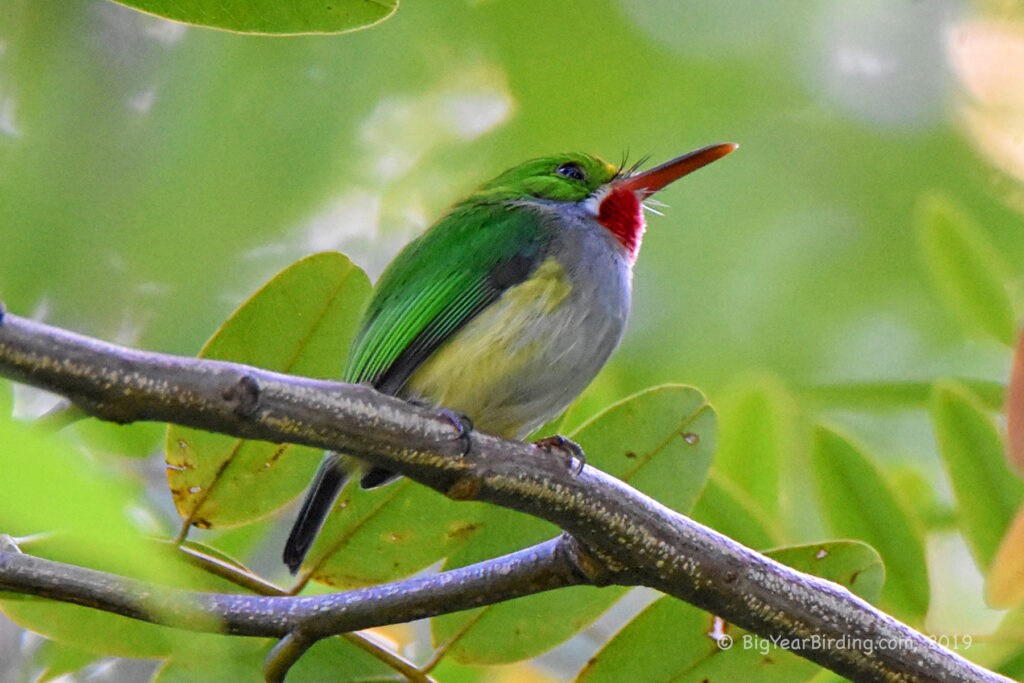
The Puerto Rican Tody (Todus mexicanus) is a small, brightly colored bird found in Puerto Rico and the Virgin Islands. Adults measure about 4.5 inches (11 cm) in length and weigh around 0.3 ounces (8.5 g). They have a distinctive, bright green plumage with a red throat, and a short, thick bill.
The Puerto Rican Tody is a year-round resident of its native range and does not migrate. It can be found in a variety of habitats, including forests, mangroves, and suburban areas, but it prefers forested areas near streams or rivers. These birds feed on a variety of insects, spiders, and small lizards, which they catch by hovering and diving from a perch.
The Puerto Rican Tody is considered a rare species and is listed as a threatened species by the US Endangered Species Act. The primary threat to the species is habitat loss, as large portions of their native forest habitats have been cleared for agriculture, urbanization, and other human development. In addition, the introduction of non-native predators, such as mongooses, has had a negative impact on the bird’s populations.
Conservation efforts have been undertaken to help protect the Puerto Rican Tody and its habitat. The US Fish and Wildlife Service and the Puerto Rican government have established the Luquillo Forest Reserve, which protects over 28,000 acres (113 km²) of forest habitat in the Luquillo Mountains. In addition, several non-profit organizations have been working to educate the public about the importance of protecting this species and its habitat, and to promote conservation actions that will help ensure its survival.
In conclusion, the Puerto Rican Tody is a small, brightly colored bird that is an important part of the native wildlife of Puerto Rico and the Virgin Islands. With a length of 4.5 inches (11 cm) and a weight of around 0.3 ounces (8.5 g), this bird is easily recognizable by its distinctive plumage and short, thick bill. Although it is listed as a threatened species, conservation efforts are underway to protect this species and its habitat, and to promote public awareness and action to help ensure its survival.
